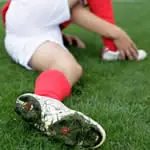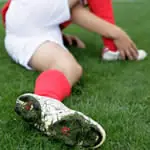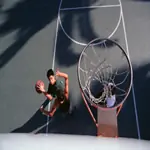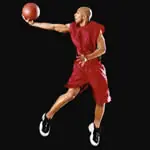Dribbling is a repetitive action in which a player uses one hand to bounce the basketball continuously, that is, without interruption, on the court. It ends the moment that continuity ends.
Ending Your Dribble
The dribble ends the moment you touch the ball simultaneously with both hands or fail to redirect it to the floor the moment it touches one of your hands. A dribble ends when you use a hand to move the ball parallel to the court, even fractionally. It also ends when you allow it to come to rest in your hand. Placing your hand at the side or in the lower half of the ball and then rotating the hand before directing the ball to the court also ends your dribble.
The Ball/Hand Relationship
The ball/hand relationship is the same as that described in my tip, the Basic Jump Shot. To dribble, pass the ball to the court with the same uncocking action of the wrist used in shooting. As the ball returns to your hand, greet it with your hand with a catching action (see my tip, Catching A Basketball in the ball-handling category) and pass it back to the court. Repeat.
The Arm/Body Relationship
Stand erect and stationary. If you are dribbling with your right hand, you should be in a staggered stance, with your left foot in advance of your right and with feet parallel to each other. Your knees should be bent.
As you use your hand and wrist to dribble the ball, let your arm hang straight down, so that your upper arm stays close to your upper body. The elbow should flex, allowing the upper arm to move up slightly, as your hand receives the ball, and to straighten as your hand directs the ball to the court. The ball should be dribbled no higher than your waist, hitting the floor just in front and to the side of your rear foot. The forefinger of your dribbling hand should be pointing in the direction you are facing. Your entire hand should remain in the top half of the ball at all times.
Touch Dribbling
As you dribble, keep your head erect so that you can see the entire court in front of you. To be effective, you must learn to dribble without looking at the ball. The lower you dribble the easier it is to dribble by touch. It is very important that as you dribble, the wrist and elbow joints are relaxed.
Become Ambidextrous
Learn to do the basic dribble with either hand. Doing so prevents the defence from trying to overplay your strong side, forcing you to dribble with your weak hand.






Discuss This Article